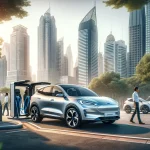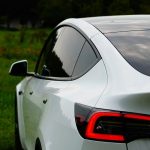Nvidia recently introduced an array of AI models designed to boost the reasoning and adaptability of physical artificial intelligence systems. These steps signal a strategic pivot for the company, which has built its market dominance through graphics processing units, toward technologies that bridge digital intelligence with real-world applications. The SIGGRAPH conference offered a public platform for these announcements, highlighting Nvidia’s ambition to integrate advanced AI into everyday robotics, autonomous vehicles, and a variety of industrial use cases.
Nvidia’s focus on physical AI follows previous interest from both technology companies and academia, but this approach further integrates AI reasoning into robotics through vision-language-action (VLA) models. Unlike earlier solutions that often relied on narrow datasets or single domains, Nvidia targets broader and more complex application fields, involving multiple partners such as Uber and Magna. The company’s automotive and robotics divisions, which once represented a minor segment of revenue, have gradually expanded their market impact yet still remain a small fraction of overall business.
What Distinguishes Nvidia’s Cosmos Reason Model?
The core of Nvidia’s latest suite is Cosmos Reason, a VLA model featuring 7 billion parameters. This model distinguishes itself through its multipurpose design, aiming to enable robots to apply prior knowledge, physics understanding, and common sense. Nvidia explains that Cosmos Reason acts as a processing center for robots, supporting complex, sequential task execution and responsive adaptation to new scenarios.
“By combining A.I. reasoning with scalable, physically accurate simulation, we’re enabling developers to build tomorrow’s robots and autonomous vehicles that will transform trillions of dollars in industries,”
stated Rev Lebaredian, vice president of Omniverse and simulation technologies at Nvidia.
How Are Industries Adopting Nvidia’s AI Technology?
Industrial partners have started to incorporate Cosmos Reason for specialized applications. Uber and Nvidia’s in-house teams are using the model to automate dataset curation and annotation for robotics and self-driving systems. Meanwhile, Magna utilizes its features to boost vehicle adaptation in new environments, and companies such as VAST Data and Milestone Systems leverage the technology for traffic monitoring and safety enhancements. This adoption shows a growing industry interest in using more advanced AI models for real-world decision-making and environmental understanding.
What Future Developments Did Nvidia Announce?
Together with Cosmos Reason, Nvidia unveiled Cosmos Transfer-2, an AI model aimed at helping robot developers generate realistic data from 3D simulations and control inputs. An optimized, faster version named Cosmos Transfer is already in use by firms such as Lightwheel and Moon Surgical to support robotics in industrial and medical scenarios. These releases target the ongoing needs of developers seeking both efficiency and fidelity in AI-powered robotics deployment.
“We stopped thinking of ourselves as a chip company long ago,”
noted CEO Jensen Huang, signaling a drive toward a broader technological identity for Nvidia. Although the automotive and robotics division showed a 72 percent rise in revenues over one recent quarter, it still makes up only a small share of Nvidia’s quarterly sales. This ongoing expansion into physical AI indicates longer-term expectations that such technologies will play a significant role in the company’s future. By positioning Cosmos Reason as a building block for intelligent machines, Nvidia is moving beyond traditional hardware into platforms that may underpin a new wave of robotics and automation systems worldwide. This evolution will likely require not only strong engineering but also collaboration across sectors to deliver practical outcomes while managing challenges such as safety, adaptability, and accuracy. Analysts and industry stakeholders will be watching closely to see how these AI solutions perform at scale and shape sectors ranging from mobility to logistics and healthcare.










